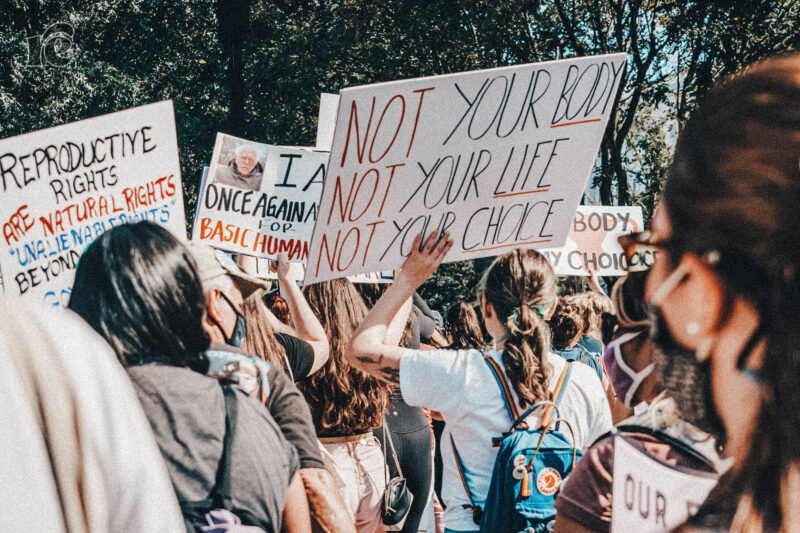Introducing My Column! Which Still Needs a Final Name!
Welcome to my column, which will be something like a cross between my reporter’s notebook and my Twitter feed. Coming to your screens every other week.

A few weeks ago, I did something that, as a journalist in 2023, is a normal part of my job: I tweeted. (Xeeted? Posted?) Specifically, I tweeted about the double-whammy of devastating news we saw that week: A total abortion ban going into effect in Indiana and a six-week ban going into effect in South Carolina.
And then I spent the rest of the day getting barked at by a bunch of (mostly) dudes who think they know more about abortion than me, a repro reporter with a decade of experience.
In particular, The Dudes™ took offense to the fact that I described both South Carolina and Indiana as being “two of the last states in their respective regions where abortion was more accessible.”
Extremely bad news for the South and Midwest this week. A total abortion ban went into effect in Indiana, and now a six-week ban will go into effect in South Carolina.
These were two of the last states in their respective regions where abortion was more accessible.
— Garnet Henderson (@garnethenderson) August 23, 2023
I was lambasted for that (true and accurate) statement, being accused of everything from doomerism to lying. Many of my replies went something along the lines of “What about Michigan?? And Illinois?? Ohio??” Abortion remains legal in many Midwestern states, many armchair experts pointed out. How dare I compare the status of abortion care there to the status of abortion care in the South? As is so often the case, the mob on the website formerly known as Twitter was missing the point.
Usually, I’d just move on. But as someone who reports a lot on the harms of mis- and disinformation, I take being accused of spreading misinformation seriously. And the hullabaloo surrounding this tweet happens to perfectly encapsulate a fact that drives so much of my work: There’s a big difference between legality and access.
Too much media coverage of abortion focuses only on legality, to the point that few people fully grasp the enormity of the abortion access crisis. They don’t realize how bad things were before Roe v. Wade was overturned—and they don’t see the full picture now. This is because so much popular discourse around abortion flattens it into a purely political issue, rather than framing it as what it is: A human right and an essential part of reproductive life.
It’s true that when you look at a map that shows states where abortion is legal or illegal, things look much worse in the South than in the Midwest. In many ways, they are: Abortion is illegal in almost the entire Southeastern United States.
I will be letting you into the strange encyclopedia that is my brain every other week. There will be takes. There will be behind-the-scenes details. There will be weird facts.
But if we take a closer look, we can see that almost every single Midwestern state places restrictions on abortion access—some more severe than others. Most of these restrictions long predate last summer’s Supreme Court decision in Dobbs v. Jackson Women’s Health Organization: targeted regulation of abortion providers, or TRAP laws, that make it difficult and expensive to keep clinics open, waiting periods and parental involvement laws that make patients’ lives harder, the list goes on.
As a result, the Midwest doesn’t have enough clinics to care for their own residents. In fact, when Roe was still in place, the Midwest was the region with the highest ratio of women of reproductive age to each abortion-providing facility. In other words, the fewest clinics compared to the number of people who might need them.
Now, those clinics are being flooded with patients traveling up from the South. Even though a few new clinics have opened up in the region, they can’t meet the enormity of this demand. The Midwest is, and has been, in the midst of an abortion access crisis. Each additional state ban worsens the catastrophe. Every single region of the country has been affected by the overturn of Roe, but the South and Midwest are the epicenter of the disaster.
Bottom line, anyone who thinks they understand the current realities of abortion access in the United States simply because they follow polling or election results doesn’t get it and never will. There’s so much more to learn here.
This is the kind of stuff that, quite literally, keeps me up at night. One thing about me is that I know too much. Behind every story I write are so many details I couldn’t fit in, and swirling around in my head at all times are so, so many facts.
Some of these facts are gleaned from my experience reporting on everything from the shady financials of “crisis pregnancy centers” to myths about exercising during pregnancy (did I mention I used to be a personal trainer?). Others are gleaned from my many daily Google binges. I have an insatiable appetite for information, OK?
And now I will be letting you into the strange encyclopedia that is my brain every other week. Welcome to my column, which will be something like a cross between my reporter’s notebook and my Twitter feed. There will be takes. (Have I told you that I think egg freezing is kind of a scam?) There will be behind-the-scenes details. There will be weird facts. If I have to know them, so do you.

